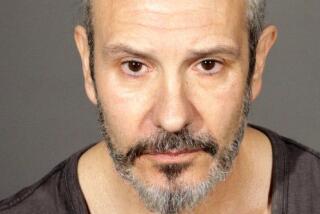Proliferation of Fake Dentists Strikes a Nerve in Cash-Strapped Peru
- Share via
LIMA, Peru — Working in an old T-shirt in a grimy office in Lima’s Zarate slum, the surly dentist pulled three of Susana Sevillano’s teeth--the wrong ones.
Then his struggles to fill the gaps with false teeth caused bleeding and an infection that left the poor housewife with a swollen jaw, barely able to speak, chew or hear. He insulted her when she complained.
Sevillano says the ragged dental chair had one leg broken, forcing her to grab the seat to keep from sliding off. The sink was gray with dirt.
But the treatment was cheap.
When she reported him to Peru’s dental authorities, she was staggered to find out that he was not a dentist. He had bought old equipment, taught himself some dentistry and started drilling.
Dental authorities are warning Peruvians to look closely at their dentist’s credentials because this impoverished Andean nation has 10,000 licensed dentists--and an estimated 10,000 to 18,000 fake ones.
Taking advantage of a lack of regulation, phony dentists have proliferated in Peru’s huge shantytowns and poor rural areas, where they sometimes outnumber real dentists by a 4-to-1 margin, said Dr. Hugo Aguayo, president of Peru’s Odontological Assn.
Many of the fakes are dental-school dropouts or dental technicians passing themselves off as dentists, but some don’t have even that little bit of training, he said.
Often using obsolete equipment, reusing gloves and needles, and even working with materials salvaged from the garbage, fake dentists charge as little as $5 to fill a tooth, one-tenth what a qualified dentist charges.
“They prey on poor people who cannot afford better care and are less likely to challenge their authority,” Aguayo said.
Sevillano heard about her “dentist” from leaflets distributed near her home in Canto Grande, a Lima shantytown. The papers advertised “special rates” for the poor.
When she arrived at the clinic, she discovered it was a dirty second-floor office in a decaying slum building. But she went ahead because she knew she couldn’t afford better.
“Now we’ve ended up going into debt paying the bills for another dentist to repair the damage he did,” Sevillano, 50, said.
The dental association, one of three institutions collecting dental malpractice complaints, said it got more than 450 reports in 1998 of botched work by false dentists in Lima.
Complaints included broken jaws, infections, loss of teeth, bloody root canals and a dental plate built over a large, cancerous tumor, Aguayo said.
Lima’s Health and Social Welfare Commission said it received 350 complaints about bad dentists from just one shantytown in 1997.
Becoming a fake dentist is a breeze thanks to streets in Lima where forgers crank out diplomas on an hour’s notice. There is an entire industry producing fake college degrees for professions ranging from engineers to doctors.
So widespread, and accepted, is this culture of falsified professionals that it has its own name in Peru--”bamba.” “Bamba” markets are well known and flourish across the country.
Government officials say people occasionally set up shop as phony physicians, too, but that problem is much less widespread because medical doctors have a more complex array of skills.
To attack the problem of fake dentists, the dental association is issuing new tougher-to-forge identity cards for its members, and it is urging Congress to make the laws harder on people who practice dentistry without a license.
The crime now carries a maximum penalty of two to four years in jail, but the dental association says it is rarely enforced and it knows of no one who has ever been imprisoned. The group wants the penalty increased to six years in prison and says the law should require the immediate seizure of a suspect’s dental equipment.
“As it is now, the false dentists walk free a few days after being captured and set up shop again in a different district,” said dentist Helmunth Meier.
But the existence of dozens of fly-by-night dental schools makes it difficult to verify qualifications, dentists say.
Lima alone has 17 dental schools, with 13 more being built. But there are only enough qualified teachers to staff four or five schools, Meier said.
Elizabeth Pesantes, a 53-year-old housewife, wished she had checked first.
She knew something was wrong when the drill hit a nerve. After breaking several teeth, the dentist fitted her with a bridge.
But the bridge was too tight and caused her searing pain and swelling. Months later, she still has trouble chewing.
It turned out the dentist had dropped out of dental school before finishing the second year of the five-year program.
“I never looked at the diplomas of doctors or dentists before. I will now,” Pesantes said.
More to Read
Sign up for Essential California
The most important California stories and recommendations in your inbox every morning.
You may occasionally receive promotional content from the Los Angeles Times.













